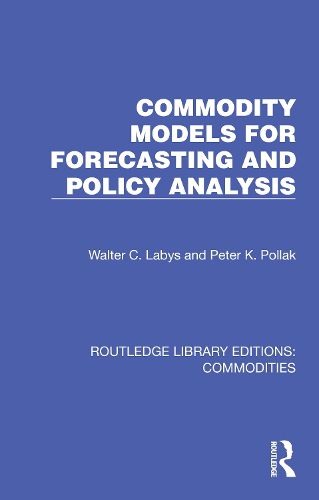Readings Newsletter
Become a Readings Member to make your shopping experience even easier.
Sign in or sign up for free!
You’re not far away from qualifying for FREE standard shipping within Australia
You’ve qualified for FREE standard shipping within Australia
The cart is loading…






Originally published in 1984 this book remains as relevant as when it was first published. At that time the oil crises of the 1970s and the growing international debt burden highlighted the extent to which events in primary commodity markets continue to influence the economies of developing and industrialized economies alike. Commodity modelling has become a valuable tool in efforts to predict and understand the behaviour of commodity markets and thereby reduce their fluctuations. This book provides an overview of the nature of the different types of commodity model as well as their diverse applications. In non-technical language the reader is introduced to the underlying modelling methodologies, including their advantages, limitations and commodity specific implications. The book will be of interest to commodity economists, traders and analysts, economic planners and those involved in agricultural, mineral and energy modelling.
$9.00 standard shipping within Australia
FREE standard shipping within Australia for orders over $100.00
Express & International shipping calculated at checkout
Originally published in 1984 this book remains as relevant as when it was first published. At that time the oil crises of the 1970s and the growing international debt burden highlighted the extent to which events in primary commodity markets continue to influence the economies of developing and industrialized economies alike. Commodity modelling has become a valuable tool in efforts to predict and understand the behaviour of commodity markets and thereby reduce their fluctuations. This book provides an overview of the nature of the different types of commodity model as well as their diverse applications. In non-technical language the reader is introduced to the underlying modelling methodologies, including their advantages, limitations and commodity specific implications. The book will be of interest to commodity economists, traders and analysts, economic planners and those involved in agricultural, mineral and energy modelling.